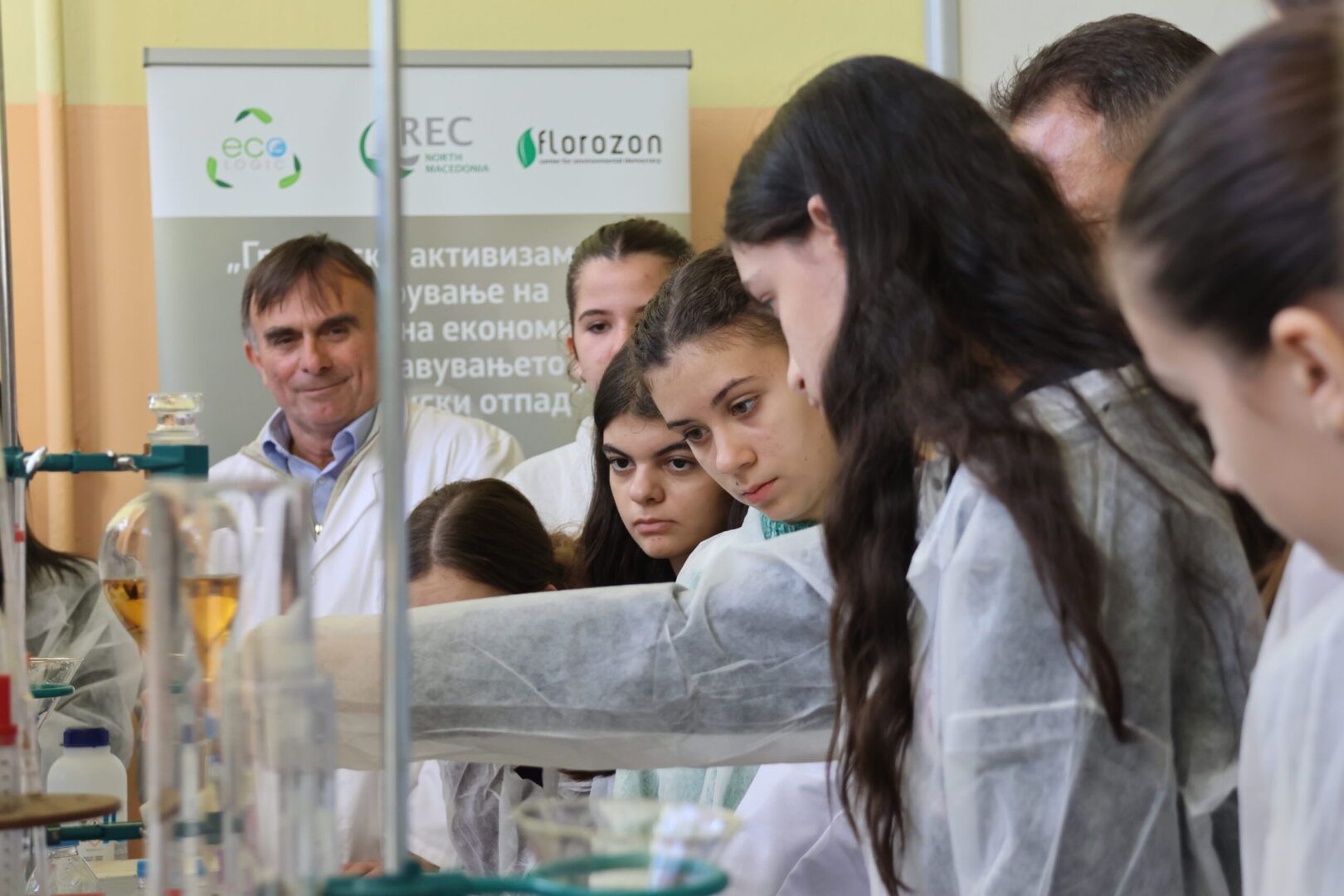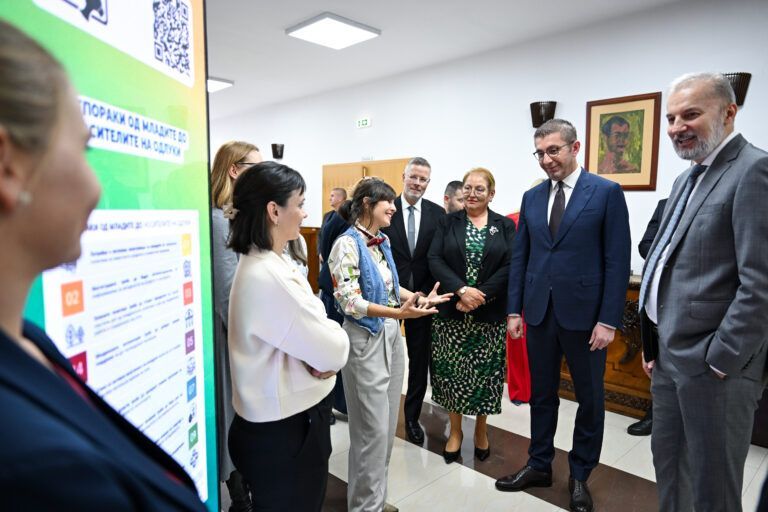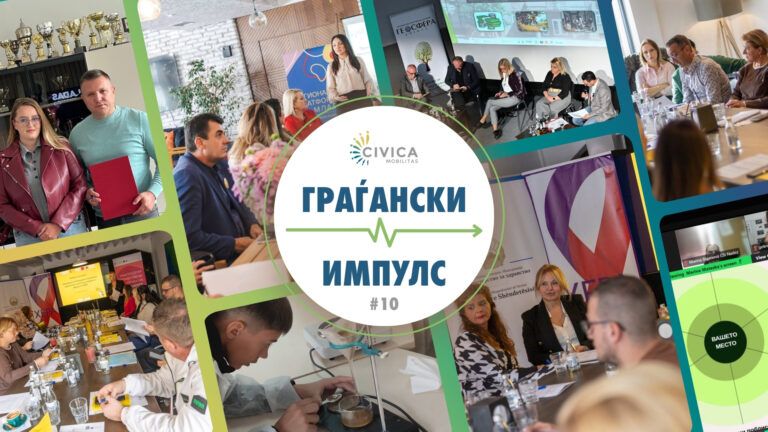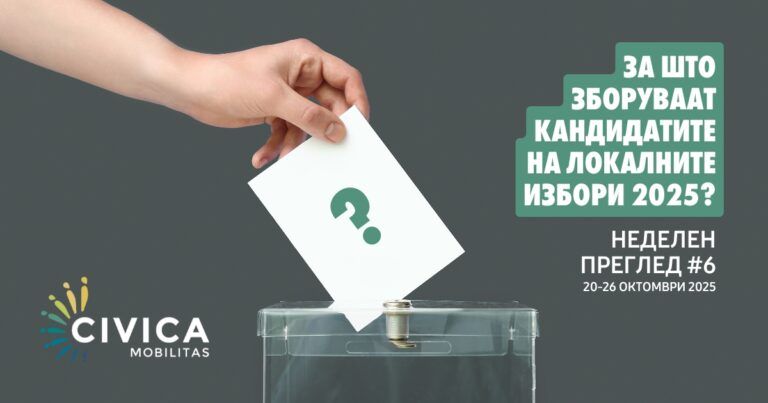From waste to innovation: Youth as drivers of environmental transformation
Change begins with us, but it mostly relies on young people. They, with fresh knowledge and awareness, can drive positive changes in their surroundings. When youth become familiar with the challenges in their environment, they turn into active participants in the process of transformation.
I was inspired by the educational workshops on the topic “Techniques for Transforming Biowaste,” organized by the Environmental Resource Center (REC) in partnership with Eco Logic and Florozon – Center for Environmental Democracy. The workshops were held at the biotechnology laboratory of the “Maria Skłodowska-Curie” High School of Chemistry in Skopje, and were aimed at elementary school students. I had the privilege to attend one of the workshops and personally observe the experiments alongside students from “Kiril Pejchinovich” Elementary School in Kisela Voda.
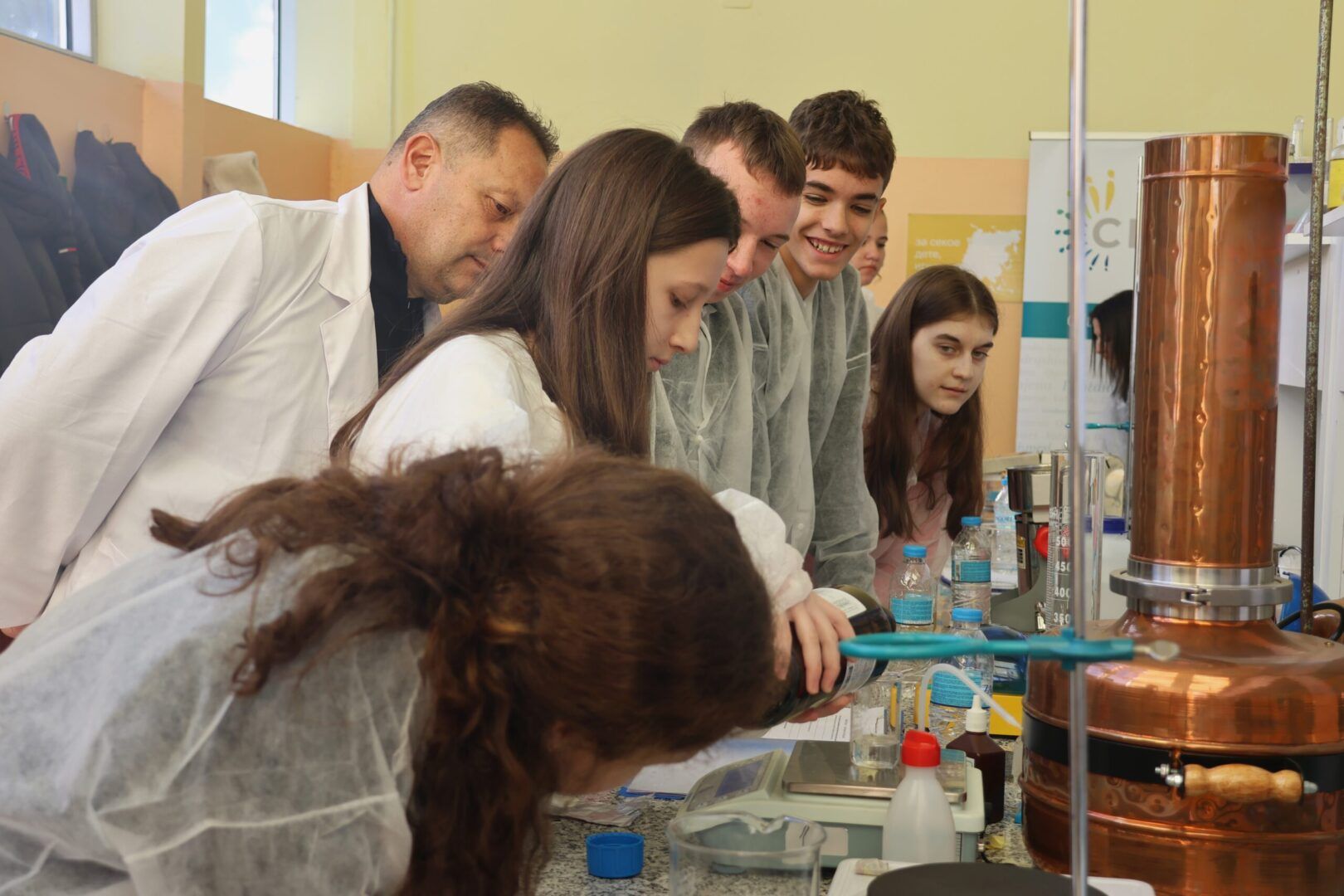
Quiet and somewhat shy, the students arrived at the laboratory. As Tamara Radovanović from REC explained, many of them were experiencing this type of teaching for the first time. “At the beginning, they are a bit skeptical and timid, but as the activities progress, they realize this is something truly interesting and significant for their future,” she said while the students donned white lab coats and prepared to get to work.
The workshop was led by experts Goran Trajkovski and Samo Suljović from the public enterprise “Drisla,” as well as Viktorija Brndevska Stipanović from the Faculty of Forestry. The students listened attentively, and the atmosphere gradually shifted. From shy pupils, they became enthusiastic participants ready to engage in experiments on sustainable organic waste management.
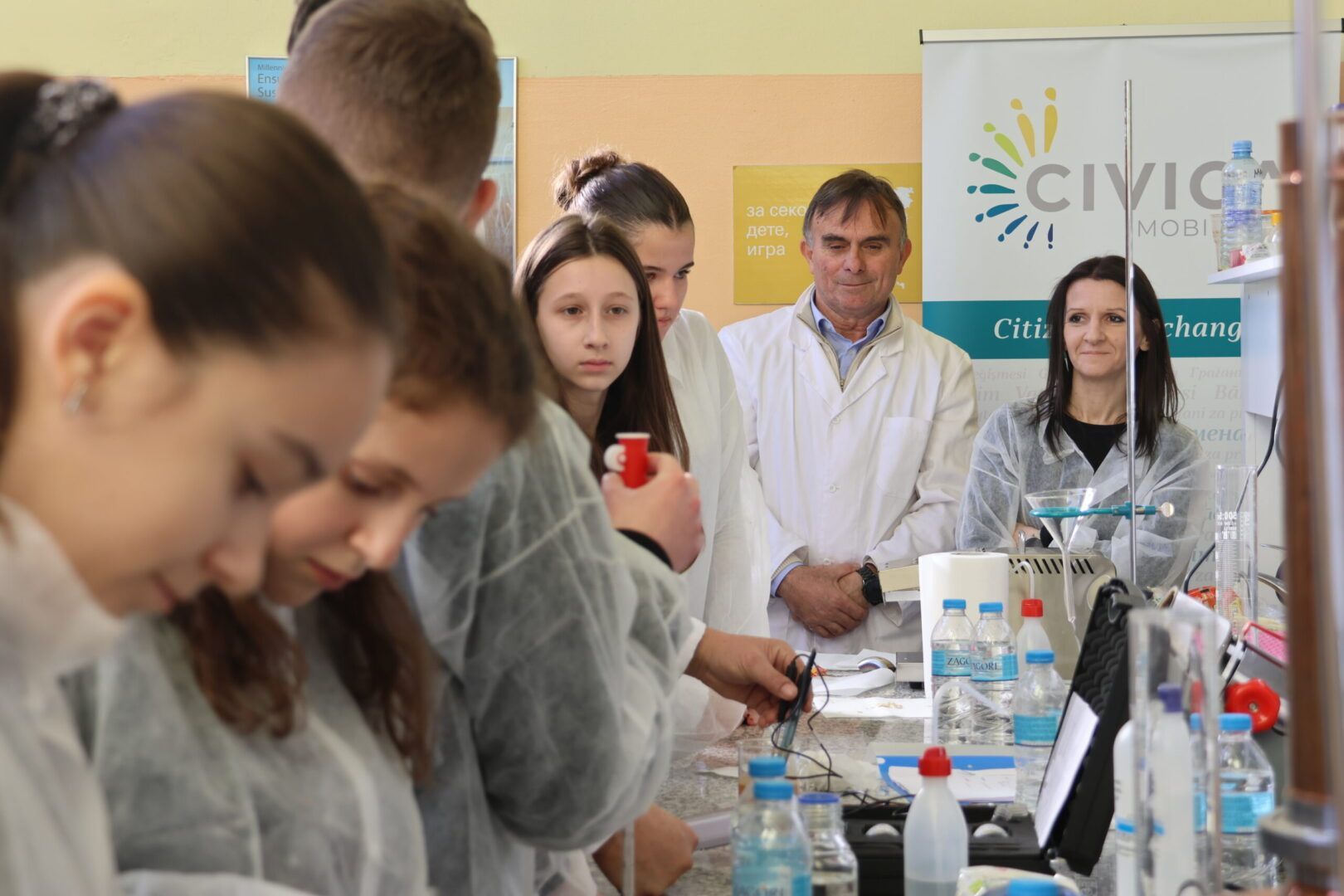
“The variety of reactions from the students when they successfully complete an experiment is especially interesting. In any case, with the activities we conduct during the workshops, it’s rare for anyone to remain indifferent, not them, and not us,” added Tamara with a smile.
“Did you know that apple peels can be used to extract pectin, which is then used to make sweets and facial creams? Or that sesame oil can be used to produce biodiesel?” the experts asked before launching into experiments that stimulated the students’ creative abilities.

The workshop featured “hacking biowaste,” a process that sounded like something from a science fiction film but was, in reality, practical and inspiring. They learned how to extract pectin from apple peels. They witnessed and participated in the process of creating biodiesel from sesame oil. It was a world of endless possibilities, and I shared the students’ excitement about it.
“For me, it was fascinating to see how apple peels could be turned into a material that can be used for sweets or other products,” shared Sara Danova, an eighth-grade student, expressing her amazement. The students were fully focused, with their phones switched off. They actively learned about biowaste processing and the potential for creating new products. Hours later, they used their phones for the first time to photograph their accomplishments, confident that their creations were worth documenting.

“The process of waiting for the final stage and seeing the end product when making bioplastic was very interesting. It felt like real plastic,” said Sara. Time flew. After four hours, we found ourselves surrounded by the students’ small scientific achievements. Only happy faces and smiles were visible. “It’s my first time in such a lab, and the part where we made pectin was especially interesting,” said David Cvetanovski, a ninth-grade student. “The first thing that came to mind was that it could be useful for making cookies, preventing apple peels from being wasted unnecessarily. Something useful for everyday life.”
The experiences from the workshop were not only fun. Conversations with the trainers opened new perspectives on the importance of the circular economy. According to a study by the Association of Biogas Plants and Biomass Producers, 50% of companies are unaware of regulations related to biowaste, and 93% believe their waste does NOT negatively impact the environment. These figures highlight the need for education and awareness, which was evident at this workshop.

The project continues with successful activities that not only raise awareness of the circular economy but also create new generations who will contribute to sustainable development in our society. So far, five workshops have been held, involving 95 students and 9 teachers from elementary schools “Dimo Hadzi Dimov” from Karposh, “St. Kliment Ohridski” and “Kiril Pejchinovich” from Kisela Voda, as well as “Vojdan Chernodrinski” and “Strasho Pindzur” from Gjorce Petrov. These are part of the planned 20 workshops, which will continue to be implemented until the end of this project.
“We are happy that thanks to this project, supported by the Swiss Government through Civica Mobilitas, we have the opportunity to continue working and reusing the laboratory. A lot has been invested in it, and it’s simply good when it’s used for its intended purpose,” said Mina Damjanović from REC.
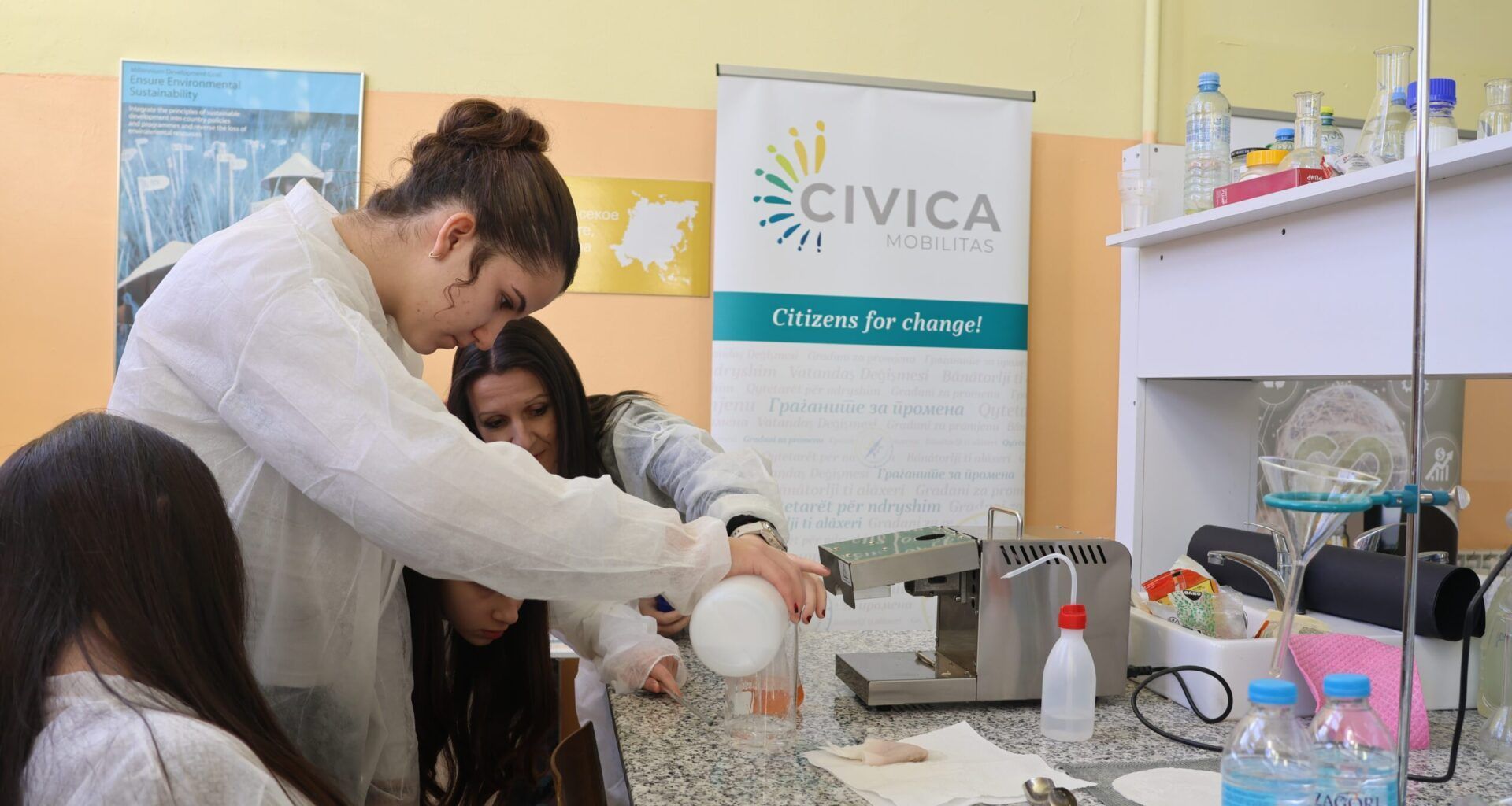
“These experiments not only helped us learn new things but also allowed us to connect our knowledge with what happens in nature and everyday life,” said the students, convinced that what they learned would be useful in the future.
At the end of the day, we all left the laboratory with a new perspective and a promise to share the knowledge we gained. Inspired to continue exploring, learning, and sharing what we have learned.

“Civic Activism for achieving a circular economy in organic waste management” is a project of the Environmental Resource Center (REC) in partnership with the Association for Environmental Protection and Advancement Eco Logic and Florozon – Center for Environmental Democracy in Skopje.


